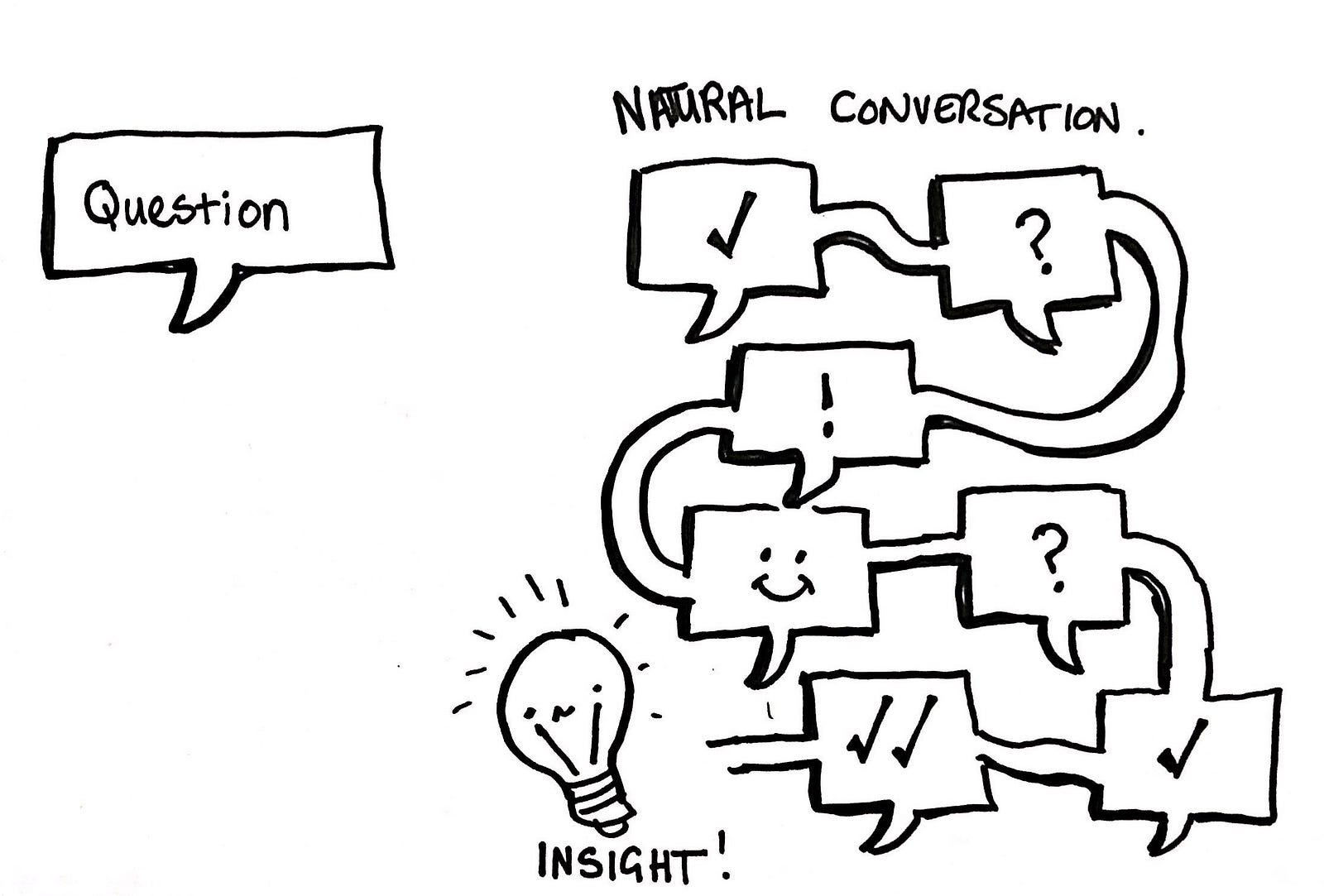So, how does interviewing a couple together make a difference, and how do you go about it?
In my example above:
I greeted them warmly, offered them a drink, asked how their days had been (same as always!) and brought them both into the research lab together.
I asked them all the initial introduction or ‘context of use’ questions as a pair, finding out about their relationship, their situation with buying a house, their finances etc. I ensured that both had an opportunity to speak as individuals as well as together. This gave me a greater understanding of some of the dynamics at play (her parents had given them a deposit, they both worked for his family’s firm, etc.), and a better appreciation of what their situation and their priorities were as a team, not as individuals.
I then asked the husband to leave the room and have a coffee. I placed the wife in the situation that a friend had reccomended she check out only one of the two products we were testing, and asked her to explore the prototype to discover more about it. I captured the usual spontaneous thoughts and feelings and usability feedback as she moved through.
After around 15–20 mins of exploring, discovering and learning more about the product, I invited the husband back in. I asked her to explain the product to him, and how/if it would be a good option for them.
The lady had been really positive about the product she’d seen, so pitched it to her husband, listing all the benefits it offered. These included how the product could work given their situation, how they could discuss it with their respective parents — and, most importantly, how it meant they’d be able to borrow more money and move into a house with a garden (a prospect that was out of their reach at the moment).
In return, the husband raised questions and concerns — would it work in this scenario? What impact would it have? He remembered his father had just retired — would that impact the deal they could get? Would their needs be putting their parents at risk in anyway?
It was a back and forth between long-term partners, the wife would clarify parts where she was certain about the details, realise that she wasn’t so sure about certain aspects of it when particular questions were raised — “Ah yes, we’ll need to look into that in more detail, and we’d have to make it clear to mum that she’d need to do this…” Together they’d walk through how it might work given scenario X vs scenario Y. It was real, and it was human.
It was like they’d forgotten I was in the room, and what I was observing was a pure, natural and honest conversation between two people with an established relationship and clear understanding of each others situation, goals and desires — something that would never truly happen in a one-on-one scenario.

The insights that this single session provided me with were more valuable than the other 5 one-on-one sessions I’d held that day combined. You can’t recreate a relationship in the hour you spend with a single participant; they had years of a shared life together that had led them to this point, and here they were discussing them in front of me.
After they discussed the first product, I then sent the wife out and ran through the same process with the husband. Finally, I gathered them both in for some final summary questions and to discuss which of the products they’d looked at would suit them both best.
It was one of the most interesting and useful research sessions I’ve conducted in a long time, and I really feel that by embracing this technique I gained far more than if I had interviewed them both individually.